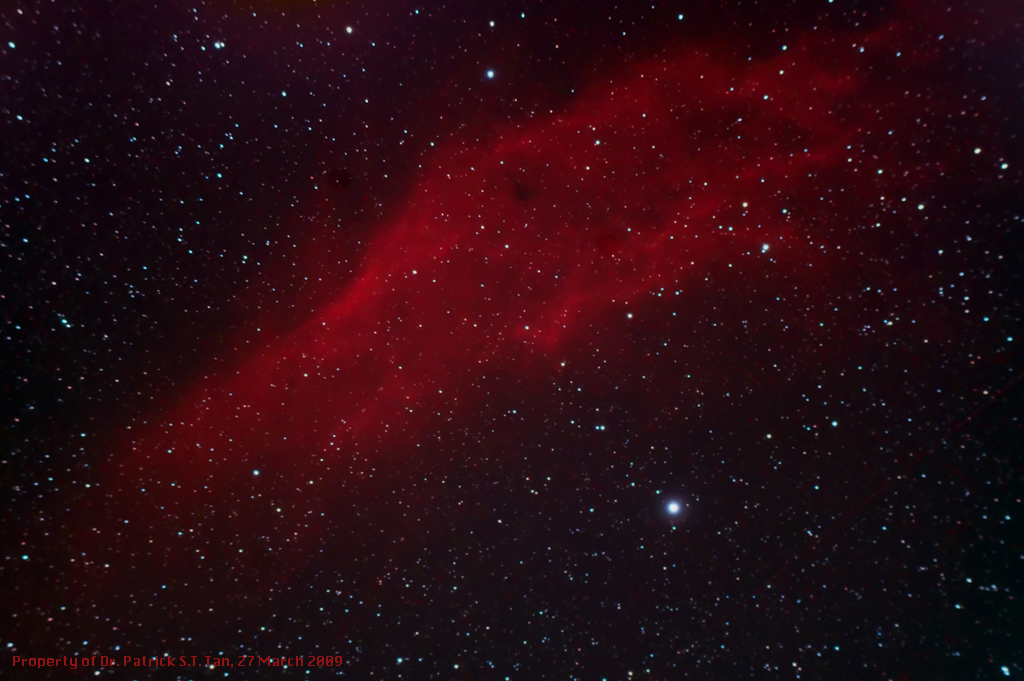
NGC 1499: California Nebula
Date: 27/03/09 Time: 2030hrs Location: Sunningwell Temperature: 7.1ºC Relative Humidity: 62%
Camera: Nikon D80 Scope: William Optics Z66 Apo Doublet at prime focus Mount: piggy-backed on Meade LX90 in equatorial mode Filter: Astronomik CLS (LPF broadband filter) Exposures: 9x600 seconds ISO: 1600 F ratio: 5.9 Guidance: Autoguided
After a winter of cloudy skies and no opportunities for any astronomy, nevermind photography, I managed to catch NGC 1499 in Perseus very late in the season for this setting constellation. This was the second attempt in a week, the first was ruined by poor visibility and haze. This particular evening had good visibility, low wind, a new moon and low moisture content in the air. The California Nebula, so called because of the similarity of its shape with the US state, is a huge area of nebulosity (about 8-10 full moon diameters long) lying next to ξ Persei (Xi) which is the blue star in the lower half of the picture. The glow in the Hα range of the light spectrum is most likely to result from the energetic blue star which is approximately 1500 light years away in the Orion arm of our Milky Way. It was discovered by Edward Barnard in 1885.
This picture is the summation of 9 ten minute exposures, stacked in Maxim DL after manual dark frame subtraction. I cannot carry this out as well as the built in long-exposure noise-reduction process in the Nikon does it, and this can be seen in the dark noise blooms across the top edge of this cropped image. Other than that, the usual black and white point setting was carried out in Photoshop followed by midtone enhancement and a single pass through Noise-Ninja at its default settings.
HOME PICTURES: Deep Sky PICTURES: Solar system PICTURES: Wide field